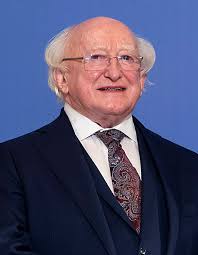Michael D Higgins: An Insight into Ireland’s Esteemed President

Introduction
Michael D Higgins has been a prominent figure in Irish politics and culture since his election as President of Ireland in 2011. His role as the country’s first citizen is marked by a deep commitment to social justice, humanitarianism, and the arts. As he approaches the end of his second term in 2025, Higgins continues to influence and inspire Irish society through his advocacy and public engagement.
Early Life and Political Career
Born on April 18, 1941, in Limerick, Higgins grew up in a politically active environment that influenced his future career. He studied at University College Dublin and later at Indiana University before entering the world of politics. As a member of the Labour Party, he served as a TD (Teachta Dála) for Dublin West for nearly three decades, holding various ministerial roles, including Minister for Arts, Culture and the Gaeltacht in the 1990s. Higgins was known for his focus on social and cultural issues during his political tenure.
Presidency of Ireland
Higgins was elected President in 2011, succeeding Mary McAleese. His presidency has been characterised by a strong emphasis on inclusivity, environmentalism, and human rights. He has also been a vocal advocate for the Irish language and arts. Under his leadership, Ireland has developed a more progressive stance on various issues, including LGBTQ+ rights, which saw significant reforms during his presidency. In 2018, Higgins was re-elected, receiving nearly 56% of the vote, a testament to his popularity among the Irish electorate.
Recent Activities and Initiatives
In recent years, Higgins has remained actively engaged in international dialogues on climate change, technological progress, and global inequalities. His speeches often address the need for a sustainable future, cultural preservation, and the importance of empathy in governance. During the COVID-19 pandemic, he delivered messages of solidarity and hope, further solidifying his role as a unifying figure in Irish society. Notably, he has championed the establishment of a national policy on culture, which aims to enrich the cultural landscape of Ireland.
Conclusion
As Michael D Higgins approaches the latter part of his presidency, he leaves a significant impact on Irish politics and society. His dedication to social issues, cultural advancement, and environmental sustainability positions him as a forward-thinking leader. Though the future remains uncertain regarding his potential re-election, his contributions to Ireland and its ongoing development are undeniable. For readers, Higgins serves as a model of leadership that prioritises the common good, compassion, and creativity in governance.









